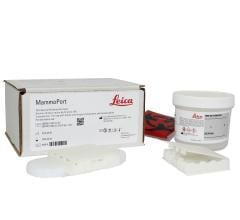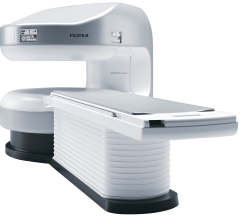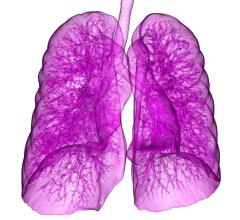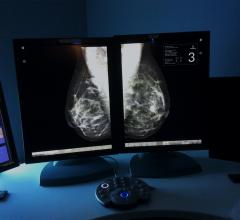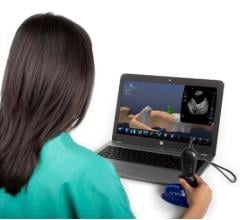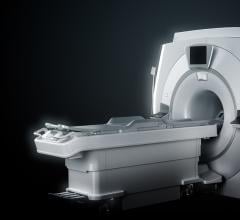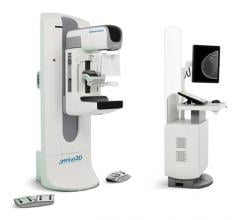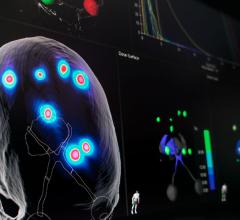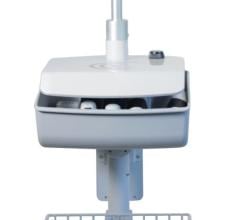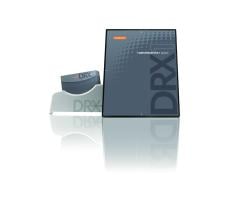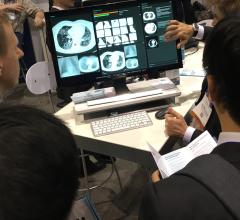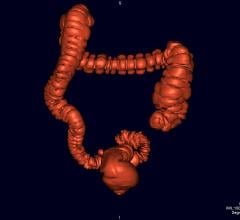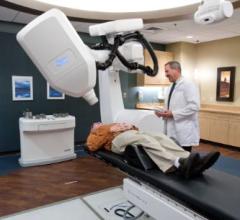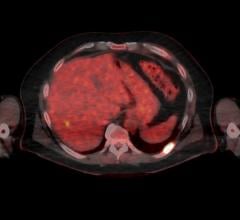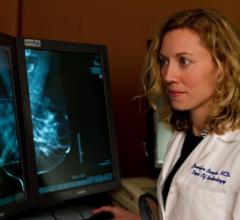According to BreastCancer.org, an estimated 266,120 new cases of invasive breast cancer are expected to be diagnosed in the U.S. in 2018, along with 63,960 new cases of in situ breast cancer. About 1 in 8 U.S. women — around 12.4 percent — will develop invasive breast cancer over the course of her lifetime.
Enterprise imaging has been a hot topic in radiology and healthcare information technology (IT) circles for the last several years as medical image acquisition has moved beyond the exclusive purview of radiology.
Leica Biosystems announced the U.S. launch of MammoPort, the first integrated specimen containment and transport system for breast tissue biopsies.
Fujifilm’s APERTO Lucent is a 0.4T mid-field, open MRI system addressing today’s capability and image quality needs ...
A study of adherence to annual low-dose computed tomography (LDCT) screening within the Veteran Health Administration Lung Cancer Screening Demonstration Project (LCDSDP) revealed only 77.6 percent of those eligible for annual repeat scans returned. The study, from the Thoracic Oncology Research Group (TROG), Division of Pulmonary Critical Care, Medical University of South Carolina, will be presented at the CHEST Annual Meeting 2018, Oct. 6-10 in San Antonio.
Breast cancer recurrence rates for patients treated with the Xoft Axxent Electronic Brachytherapy (eBx) System that complied with adjuvant medical therapy were comparable to those seen in the TARGIT-A study that used different technology. Outcomes of the long-term study, with a mean follow-up of 55 months, were published in the The American Journal of Surgery.1 To date, this study presents the most long-term research of intraoperative radiation therapy (IORT) using the Xoft System published in a peer-reviewed journal.

SPONSORED CONTENT — Fujifilm’s latest CT technology brings exceptional image quality to a compact and user- and patient ...
October 2, 2018 — Results from a new study show that dense breast reporting laws in the United States significantly ...
SPONSORED CONTENT — Fujifilm’s latest CT technology brings exceptional image quality to a compact and user- and patient ...
October 2 2018 — GE Healthcare announced an equity investment in SonoSim, which specializes in ultrasound education and ...
October 1, 2018 — The U.S. Food and Drug Administration (FDA) approved the compatibility of Insightec’s Exablate Neuro ...
M*Modal announced that several large U.S. health systems have adopted its cloud-based artificial intelligence (AI) platform to support next-generation electronic health record (EHR) workflows and reduce the administrative burden on doctors. These solutions work independently or are deeply embedded in the EHR by leveraging M*Modal technology to improve the quality of patient care and the clinical note.
SPONSORED CONTENT — EnsightTM 2.0 is the newest version of Enlitic’s data standardization software framework. Ensight is ...
Susan G. Komen founder Nancy G. Brinker and Australian author and Pink Hope founder Krystal Barter will join Hologic in ringing the Nasdaq Opening Bell on October 1 to mark the start of Breast Cancer Awareness Month. The ceremony will be led by Steve MacMillan, Hologic’s chairman, president and CEO. 2018 marks the 13th consecutive year that Hologic has rung the Nasdaq Opening Bell on October 1.
September 28, 2018 — Brainlab announced a strategic development partnership with Florida-based Magic Leap, a developer ...
Clarius Mobile Health is introducing the Clarius Cart at the American College of Emergency Physicians (ACEP) 2018 Scientific Assembly, Oct. 1-4 in San Diego. The Clarius Cart is an ultrasound accessory to complement the company’s lineup of wireless ultrasound scanners for use in more traditional settings. It is a mobile cart with a lockable cabinet to hold scanners, a working space for procedures, and a charging dock for scanner batteries and smart devices. It is designed for hospital and clinical environments to give clinicians the flexibility of personal ultrasound with the utility of traditional cart-based systems, without any cables.
Did you know that approximately one-third of all the data in world is created by the healthcare industry and that ...
VCU (Virginia Commonwealth University) Medical Center recently upgraded 18 Carestream digital X-ray systems that perform approximately 160,000 imaging procedures annually with Carestream DRX-1 in-room retrofits and the company’s DRX detectors. The upgrade included six DRX-Evolution systems, nine DRX-Revolution Mobile X-ray systems and three room-based imaging systems. These imaging systems allow rapid access to patient images by VCU Medical Center’s orthopedic, pediatric, trauma, musculoskeletal and emergency room (ER) specialists as well as other physicians.
September 28, 2018 — Artificial intelligence (AI) driven by machine learning (ML) algorithms is a branch in the field of ...
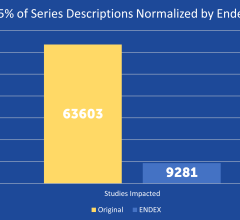
SPONSORED CONTENT — EnsightTM 2.0 is the newest version of Enlitic’s data standardization software framework. Ensight is ...
https://www.congress.gov/bill/115th-congress/house-bill/1298?q=%7B%22se… cancer care advocacy groups and medical societies are calling on Congress to pass the CT Colonography Screening for Colorectal Cancer Act (S.3465/HR 1298). The bipartisan bill introduced in the U.S. Senate September 19 would provide Medicare coverage for screening computed tomography colonography (CTC), commonly known as virtual colonoscopy.
Accuray Inc. announced that published data from two prospective, multi-center studies using differing protocols provide consistent results and reinforce the use of the CyberKnife System for the effective management of low- and intermediate-risk prostate cancer. These studies are the largest conducted to date evaluating stereotactic body radiation therapy (SBRT) in patients with localized prostate cancer. The studies were recently published online in the International Journal of Radiation Oncology*Biology*Physics and in European Urology Oncology.
Eric Morris, a Ph.D. candidate at Henry Ford Hospital and Wayne State University, explains his project to automate ...
Advancements in healthcare technology, particularly in the surgery category, have led to an increasing adoption of gamma cameras. Further, the numerous developments in radionucleotides are anticipated to favor the adoption of solid state cameras and mobile gamma cameras. These findings are presented in a new research study on the global mobile gamma cameras market by Future Market Insights (FMI).
September 26, 2018 — Black women are more likely to be diagnosed at later stages of breast cancer partly due to barriers ...
Leveraging years of industry-leading expertise in flat-panel display technology, LG Business Solutions has expanded ...


 October 03, 2018
October 03, 2018 

